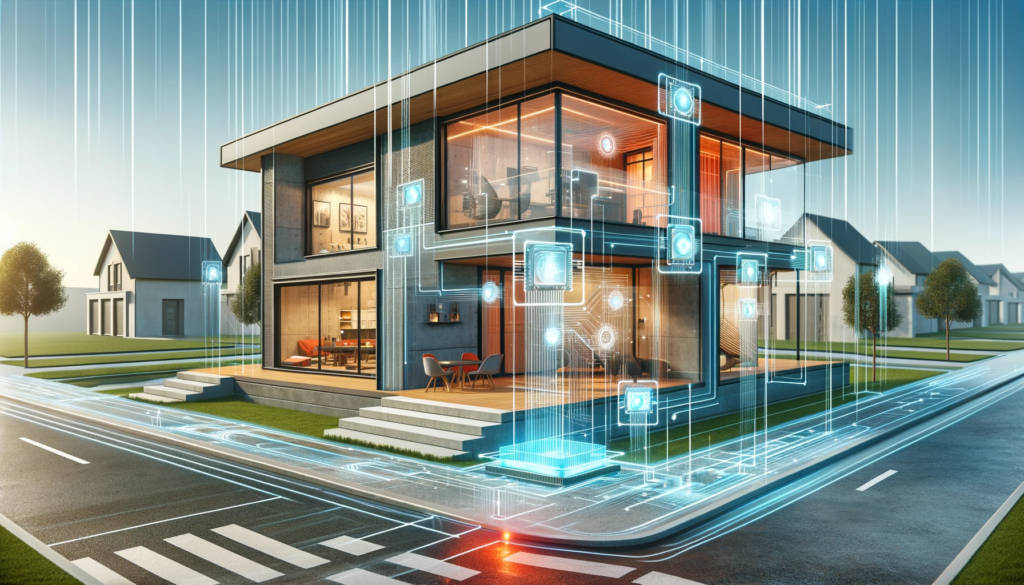Exploring Smart Home Drainage Systems: A Game-Changer for Modern Living

Introduction to Smart Home Drainage
Imagine a world where drainage systems are as intelligent as the phones in our pockets. That’s the promise of smart home drainage systems, a remarkable fusion of traditional plumbing and cutting-edge technology. Here, I’ll guide you through the essentials, showcasing how these systems can elevate your home into a bastion of high-tech convenience and safety.
Key Takeaways:
- Embrace the cutting-edge of home drainage.
- Understand how smart systems bring new levels of control and efficiency.
The Evolution of Home Drainage
Tracing the lineage of home drainage can be likened to browsing through a history book filled with tales of inventive experiments and incremental enhancements. Let’s take a quick glance at how we’ve transitioned into the age of smart home plumbing:
| Era | Drainage Characteristics | Limitations |
|---|---|---|
| Traditional | Basic pipes and gravity | Prone to blockages |
| Modern | More durable materials, better designs | Still reactive in nature |
| Smart Home Era | Automated and proactive management systems | Initial setup complexities |
To delve deeper into how the modern era tackles such complexities in drainage, you might find “Understanding Residential Drains” and “Types of Home Drainage Systems” particularly illuminating.
Essential Components of Smart Drainage
Delving into the anatomy of a smart home drainage system, we uncover a symphony of components, each with a specialized role. Here is a snapshot of what makes up the smart drainage paradigm:
Breakdown of Smart System Components:
- Sensors: Detect water levels, flow, and potential contaminants.
- Automated Valves: Adjust water flow based on sensor data.
- Control Units: Act as the brains of the operation, processing data and making decisions.
- Connectivity: Allows for remote management and integration with other smart home technologies.
Accessing the full potential of these features often means integrating with home networks. For those embarking on DIY projects in this realm, “DIY Drain Installation” could serve as a valuable resource.
Benefits of Smart Drainage in Residential Settings
Adopting a smart drainage system is much like hiring a meticulous caretaker for your home’s waterways—vigilant, responsive, and tirelessly efficient. Let’s consider the compelling advantages:
Advantages of Smart Drainage Systems:
- Theft of Water Conservation:
- Precise water management reduces wastage.
- Intelligent systems contribute to sustainable living goals.
- Prevention of Backups & Overflows:
- Proactively identifies blockages, avoiding common drain problems.
- Averts water damage and associated repair costs.
- Ease of Maintenance & Diagnostics:
- Automated alerts for regular drain maintenance.
- Simplified troubleshooting, potentially reducing the need for professional assistance.
Moreover, environmental benefits are not to be overlooked, which is why reading about “Eco-Friendly Drain Solutions” could inspire more green initiatives in your approach to home drainage.
Installation Insights: Upgrading to Smart Drainage
Upgrading your home with smart drainage tech should not feel like a navigation through a labyrinth. Whether you’re retrofitting or installing anew, here are some key steps and considerations:
Installation Steps:
- Assess your current drainage system for upgrade compatibility.
- Choose smart components that integrate seamlessly with your home network.
- Install sensors, control units, and valves according to manufacturer guidelines.
- Sync with your smart home hub for complete control and automation.
For those who prefer a more hands-on approach, “DIY Drain Installation” might prove to be a treasure trove of useful tips.
Installation Challenges and Solutions:
- Compatibility: Ensure new tech meshes with existing systems.
- Cost: Factor in both short-term and long-term financial implications.
- Expertise: DIY if you can, or consult “Choosing a Drainage Contractor” for professional installation.
Smart Drainage and Environmental Impact
The environmental footprint of our homes is more scrutinized than ever, and smart drainage systems stride confidently into this eco-conscious landscape.
Environmental Benefits:
- Efficiency: Reduces the quantity of wasted water.
- Sustainability: Supports conscious water usage practices.
- Ecosystem Preservation: Minimizes waterway pollutants by detecting contaminants early.
Understanding the ecological ramifications of your home’s drainage is pivotal. For further reading on eco-friendly practices, “Eco-Friendly Drain Solutions” provides excellent insights.
With a focus on conservation and innovation, smart drainage systems not only serve our homes but also our planet.
Maintenance and Troubleshooting
Maintaining a smart drainage system combines routine checks with smart diagnostics, ensuring a smooth and efficient operation for years to come.
Routine Maintenance Checklist:
- Inspect Sensors: Regularly ensure they’re clean and functioning.
- Test Automated Valves: Check for responsive opening and closing.
- Software Updates: Keep system firmware current to maintain optimal performance.
Troubleshooting is often simplified with smart systems:
| Symptom | Possible Cause | Smart Solution |
|---|---|---|
| Unresponsive valves | Power issues or blockages | System diagnostics & alerts |
| Irregular water flow | Sensor malfunction | Remote checks & recalibration |
| Alert notifications | Potential leaks or blockages | Guided corrective actions |
For in-depth maintenance advice, the article on “Drain Maintenance Tips” can be a real lifesaver.
Cost-Effectiveness and Value Addition
In the dialogue surrounding smart home investments, cost and value take center stage. Here’s how smart drainage systems prove their worth financially:
Financial Considerations:
- Utility Savings: Automated water conservation leads to long-term savings.
- Property Appreciation: Modern smart systems can increase home value.
- Repair Reduction: Proactive problem detection minimizes costly repairs.
Understanding the return on investment is crucial, which is explored further in “Cost-Effective Drainage“.
A smart home drainage system is an investment that pays dividends not only in dollars but also in comfort and peace of mind.
Conclusion: Embracing the Future of Drainage
The march towards smart technology in the home has transformed various facets of domestic life, with smart home drainage systems standing as a testament to this progress. They blend responsiveness with efficiency, creating a living space that’s more manageable, sustainable, and comfortable.
Final Takeaways:
- Smart drainage systems meld the latest tech with age-old plumbing principles.
- They bring unparalleled benefits, such as water conservation and enhanced home value.
- The marriage of convenience, control, and conservation is hard to overlook.
Embracing smart drainage is more than just a home improvement—it’s a lifestyle upgrade and a commitment to the environment. Whether you’re motivated by the need for efficiency or a desire for a high-tech home, smart drainage systems are undeniably a smart choice.
Now that you’ve gained insight into the transformative potential of smart drainage systems, are you inspired to make the leap? For additional guidance on managing your home’s drainage needs throughout the seasons, perhaps “Seasonal Drainage Care” will serve as a helpful next read.
FAQ: Smart Home Drainage Systems
Q: Can smart drainage systems integrate with all types of home automation systems? A: Most smart drainage systems use standard protocols that allow them to integrate with various home automation platforms. However, checking compatibility before purchase is always a good idea.
Q: How do smart drainage systems help in water conservation? A: Smart drainage systems use sensors and automated valves to precisely control water flow, reducing waste and promoting sustainable usage.
Q: Are smart drainage systems difficult to install? A: Installation complexity can vary. Some systems are designed for easy DIY installation, while others might require professional assistance, especially when integrating into complex home automation networks.
Q: Do smart drainage systems require a lot of maintenance? A: No, in fact, they often reduce maintenance needs due to their self-monitoring capabilities and alert systems. Regular updates and checks are recommended to ensure they function optimally.
Q: Are there any financial benefits to installing a smart drainage system? A: Absolutely. Although there might be an upfront cost, smart drainage systems can lead to savings through efficient water usage and by preventing expensive damages, as well as potentially increasing home value.
Q: Can I control a smart drainage system remotely? A: Yes, many systems offer remote control via smartphone apps or web interfaces, allowing you to manage your drainage system from anywhere.
Q: What should I do if my smart drainage system sends an alert? A: Follow the system’s troubleshooting steps, which often guide you through resolving issues. If the problem persists, contact professional support.




